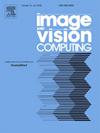Efficient masked feature and group attention network for stereo image super-resolution
Abstract
Current stereo image super-resolution methods do not fully exploit cross-view and intra-view information, resulting in limited performance. While vision transformers have shown great potential in super-resolution, their application in stereo image super-resolution is hindered by high computational demands and insufficient channel interaction. This paper introduces an efficient masked feature and group attention network for stereo image super-resolution (EMGSSR) designed to integrate the strengths of transformers into stereo super-resolution while addressing their inherent limitations. Specifically, an efficient masked feature block is proposed to extract local features from critical areas within images, guided by sparse masks. A group-weighted cross-attention module consisting of group-weighted cross-view feature interactions along epipolar lines is proposed to fully extract cross-view information from stereo images. Additionally, a group-weighted self-attention module consisting of group-weighted self-attention feature extractions with different local windows is proposed to effectively extract intra-view information from stereo images. Experimental results demonstrate that the proposed EMGSSR outperforms state-of-the-art methods at relatively low computational costs. The proposed EMGSSR offers a robust solution that effectively extracts cross-view and intra-view information for stereo image super-resolution, bringing a promising direction for future research in high-fidelity stereo image super-resolution. Source codes will be released at https://github.com/jianwensong/EMGSSR.

 求助内容:
求助内容: 应助结果提醒方式:
应助结果提醒方式:


